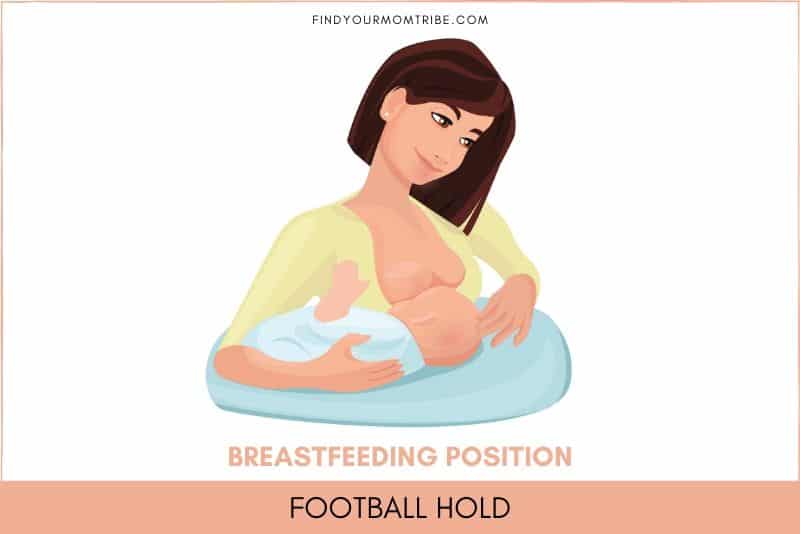Successful Breastfeeding: How To Get Baby To Latch Deeper


Even though breastfeeding is an instinct, this doesn’t mean that all babies automatically know what to do during their first nursing sessions.
In fact, there are numerous tips on how to get a baby to latch deeper, which just shows you how common this is!
A deep latch equals a good latch. This means that the mother’s nipple and parts of her breast tissue are deep inside the baby’s mouth.
Knowing how to get a baby to latch deeper will ensure that he or she gets enough milk to grow into a healthy and happy baby.
What’s more, a deeper latch means a more comfortable breastfeeding experience for the mom, allowing her to continue nursing for as long as she would like without having to suffer from painful breastfeeding.
If you are not sure whether your baby has a poor latch or not, one of the first signs to look out for is severe pain in your nipples – this is a result of the baby’s gums clamping down on your nipple.
RELATED: Why Baby Won’t Latch And 15 Ways To Fix It
Luckily, there are many different nursing positions you can try to make breastfeeding the wonderful and painless experience it should be for every new mom!
How to get baby to latch deeper

One of the best methods to encourage a deeper latch is to lie your baby on your tummy.
The close contact between you and your little one will help the baby awaken their instinct to nurse.
There are different motions babies make when they are ready to eat, such as starting to bob their head, rooting, and opening their mouth.
Don’t wait until your little one starts crying, as this is a late indicator of hunger and it could be more difficult to get into a comfortable position with a very upset baby.
No matter which breastfeeding position you choose, there are a few steps you can take to make sure your baby is latched in a way that’s comfortable for you and allows the baby to get enough milk.
While holding your baby in one arm, use the other to hold your breast so that your index finger is below the nipple and the thumb is above your nipple.
Encourage your baby to open their mouth in a gape as this will ensure that the nipple and breast tissue goes deep into their mouth (the baby’s lips will also close over all or a part of the areola).
With time, you will figure out what is the best nursing position for you and your little one.
Remember that it’s always best to perfect one position, rather than to switch back and forth between different ones.
The football hold

The football or clutch position is called this because the mom holds the baby like a football while he or she is feeding.
The baby’s head rests against the back of your hand, while the rest of the baby’s body rests against the length of your arm.
This position is especially well-suited for moms who had a C-section because the baby won’t be in any contact with the scar.
The cradle hold

Moms love this nursing position because it allows them to gently hold or cradle the baby against their tummy with their arm, while the baby’s head is supported by their forearm.
You can even use a pillow to lift the baby up to make sure that their mouth is right in front of your nipple.
The football or clutch position is called this because the mom holds the baby like a football while he or she is feeding.
The baby’s head rests against the back of your hand, while the rest of the baby’s body rests against the length of your arm.
This position is especially well-suited for moms who had a C-section because the baby won’t be in any contact with the scar.
The cradle hold

Moms love this nursing position because it allows them to gently hold or cradle the baby against their tummy with their arm, while the baby’s head is supported by their forearm.
You can even use a pillow to lift the baby up to make sure that their mouth is right in front of your nipple.
While breastfeeding at night, many moms find this to be the best position for the baby and themselves since they don’t have to leave the bed to nurse, and it doesn’t disturb their precious sleep as much as getting up does.
In this position, you lie on your side, facing your baby while cradling him or her with your arm.
While nursing in the side-lying position, remember to remove any extra blankets or sheets that could be dangerous to your little one.
Even though it is one of the most comfortable nursing positions, it takes some practice to get right, so practice it during the daytime first before trying it out in the middle of the night.
The laid-back breastfeeding position is very comfortable for both mom and baby, as you can lean back in a chair or in bed and place your little one on your chest.
Use your hand to keep the baby’s bottom in place and their body firmly against yours.
Encourage your baby to open their mouth by rubbing their cheek or the tip of your nipple on their lips, until the baby latches.
How do I know that my baby’s latch has improved?
